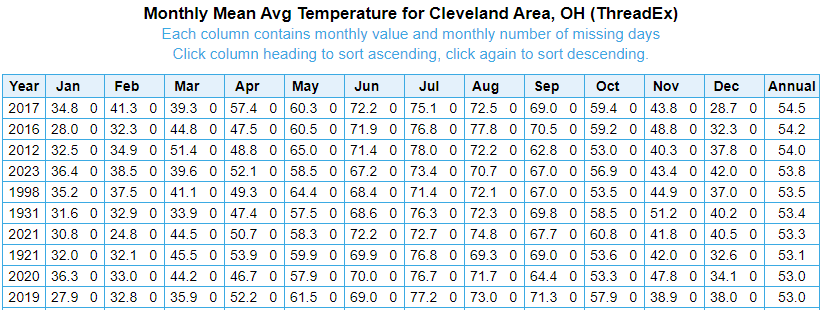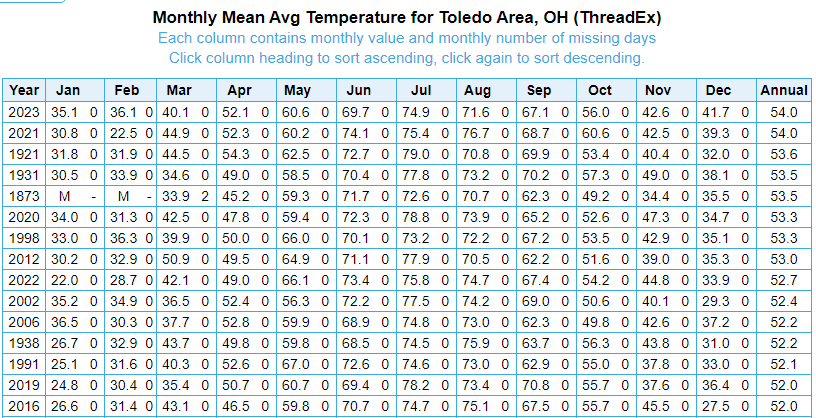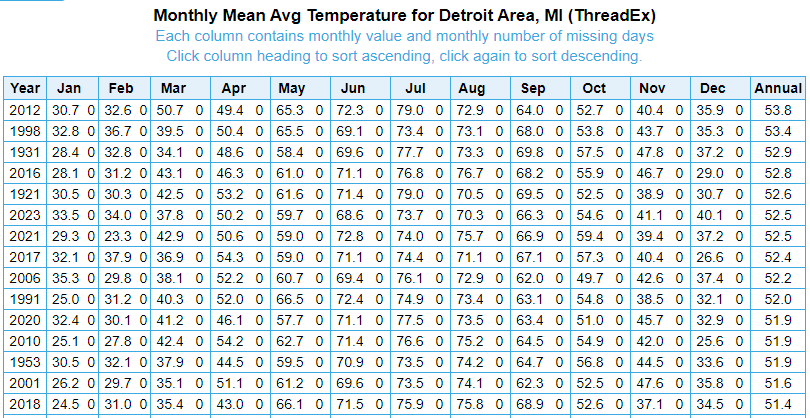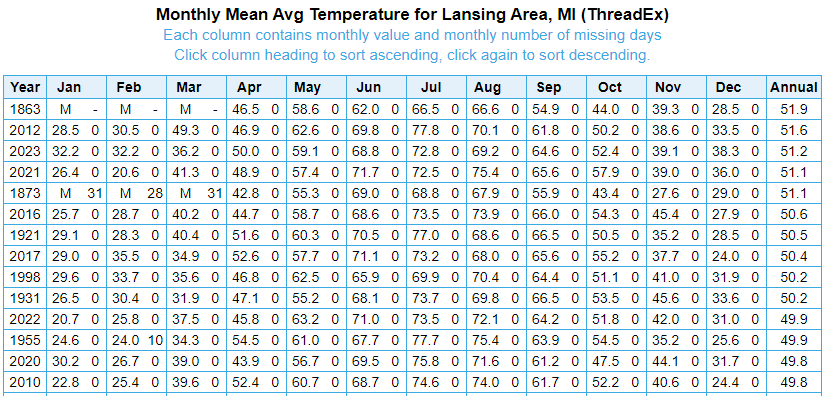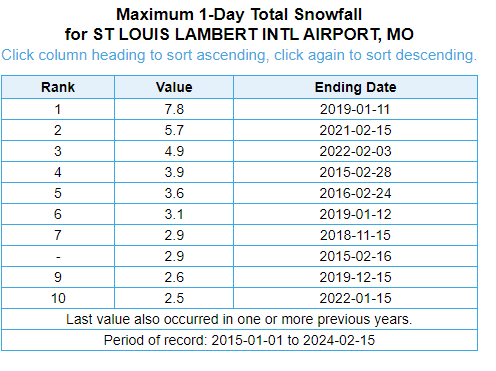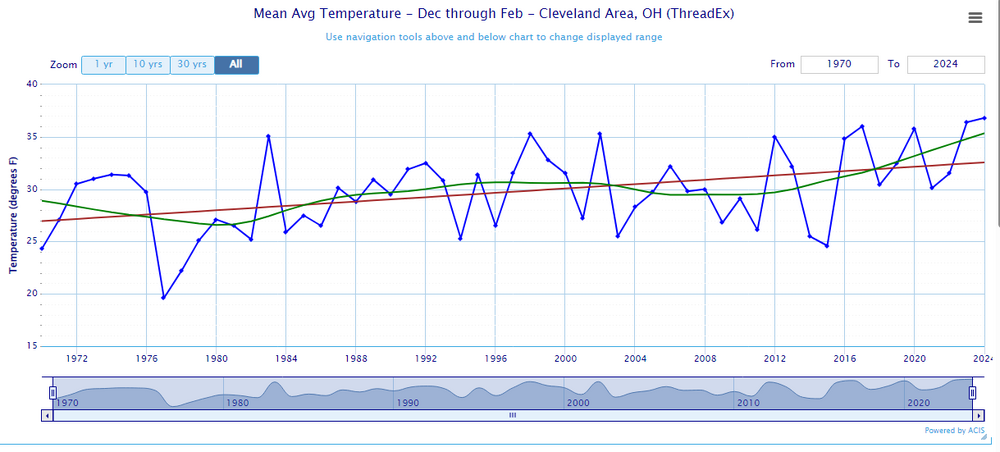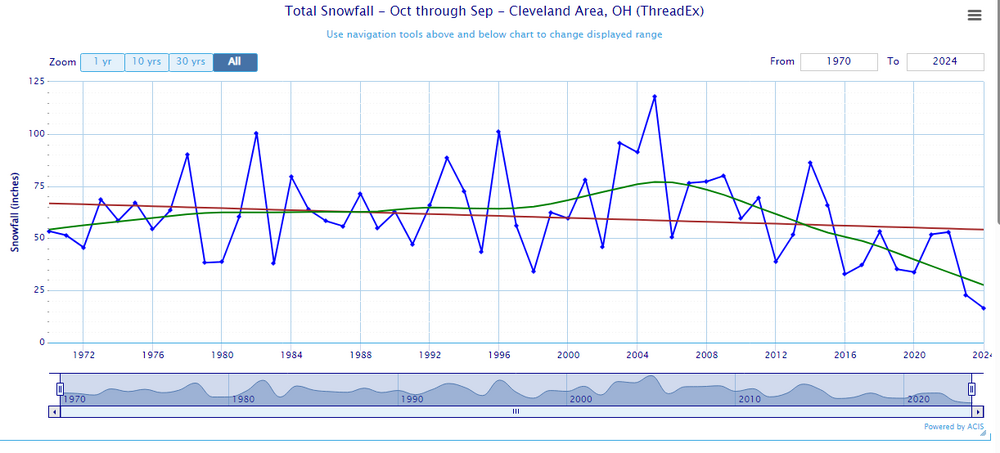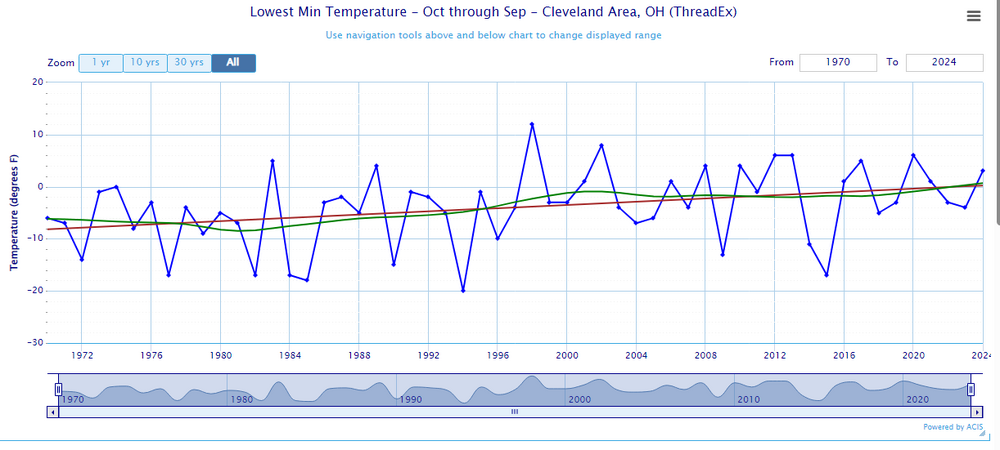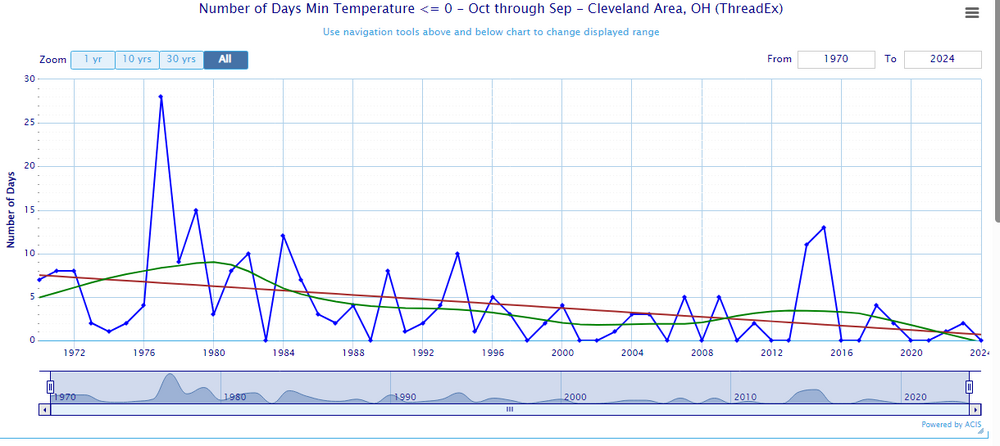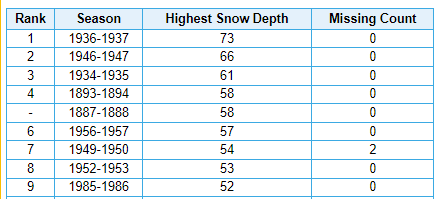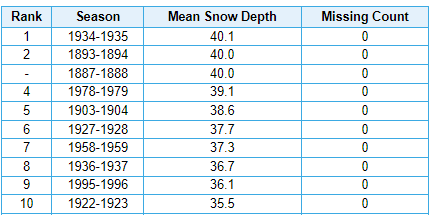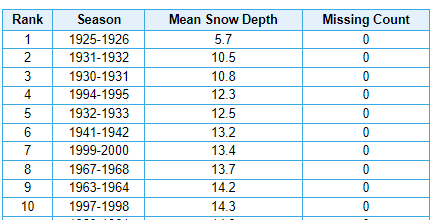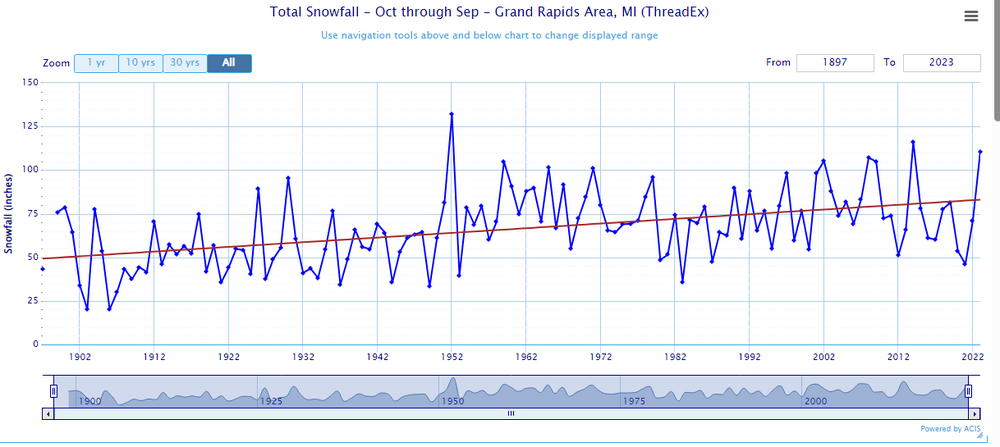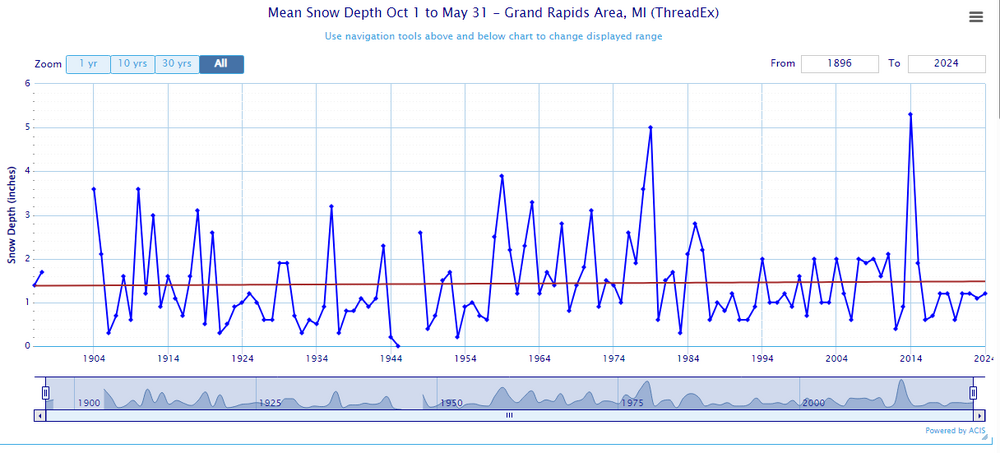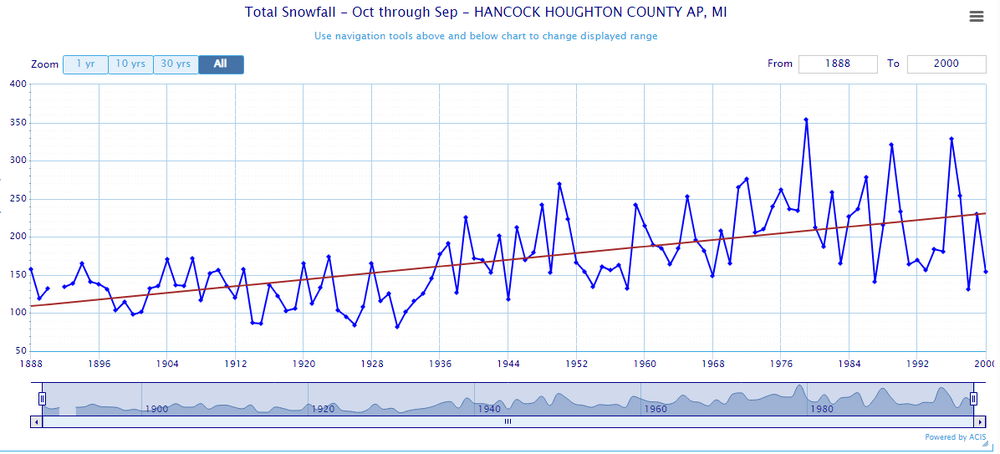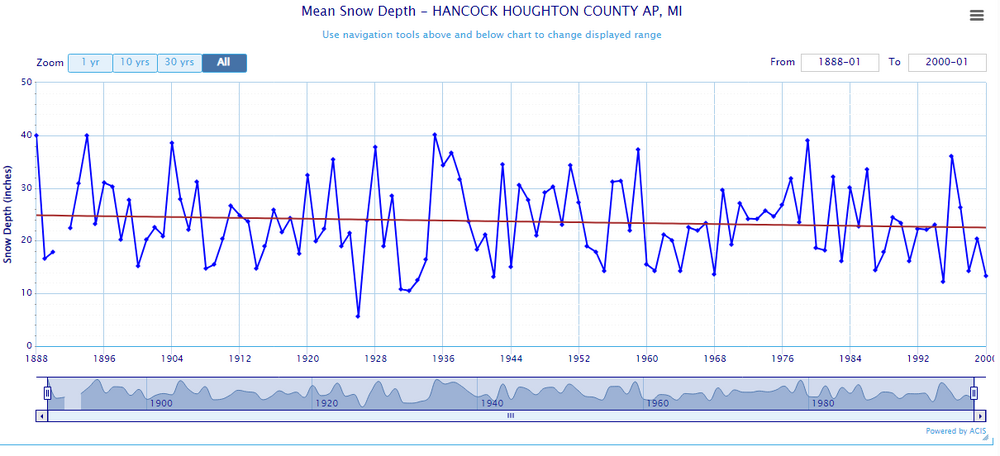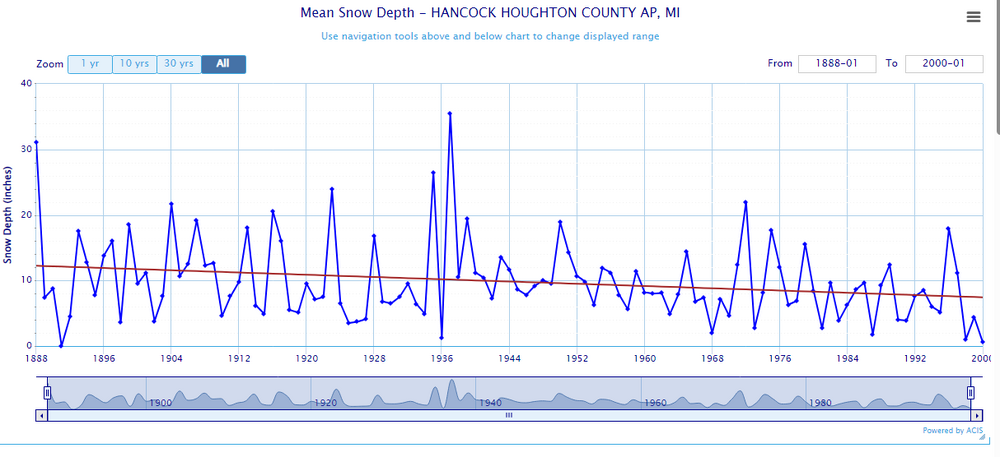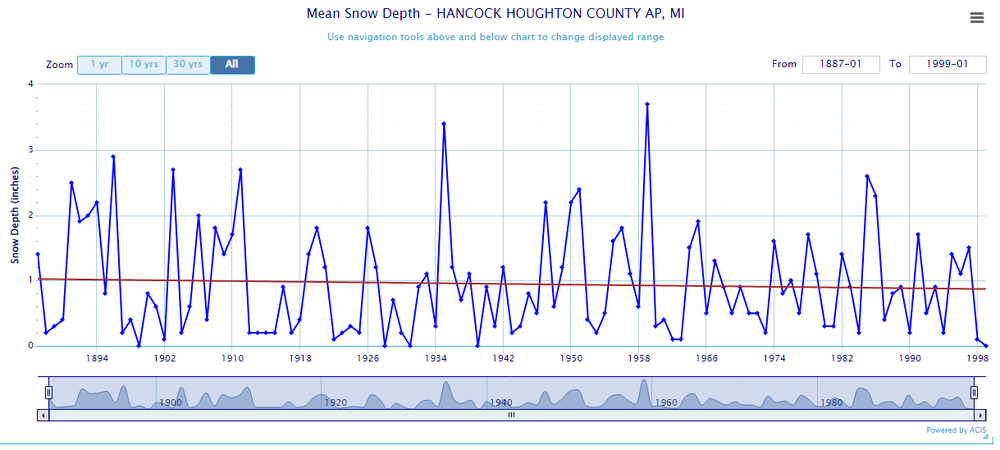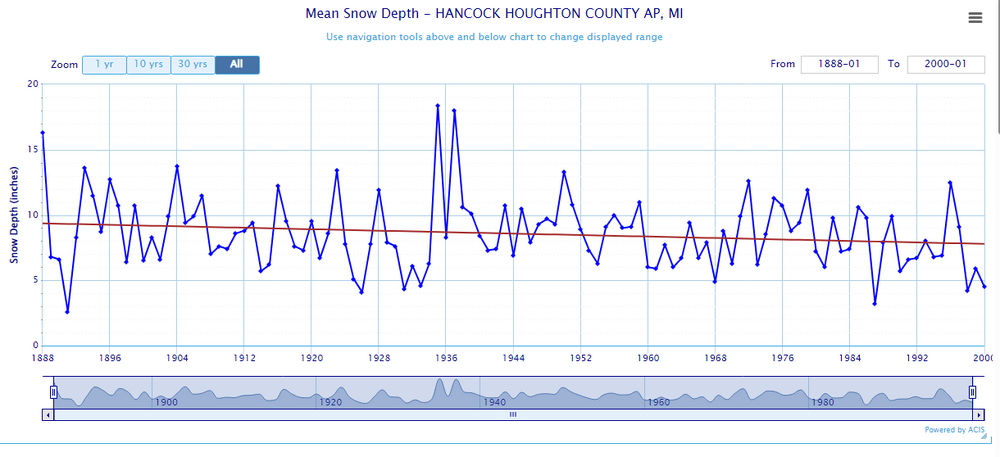
TheClimateChanger
Members-
Posts
4,044 -
Joined
-
Last visited
Content Type
Profiles
Blogs
Forums
American Weather
Media Demo
Store
Gallery
Everything posted by TheClimateChanger
-
Pittsburgh, Pa Winter 2023-24 Thread.
TheClimateChanger replied to meatwad's topic in Upstate New York/Pennsylvania
Warming winters: NWS Pittsburgh predicts this season likely to be second-warmest winter - Observer-Reporter -
Wow! Dude, I read Tony Heller all the time. They used to run huge, multipage spreads about climate and weather events that today would be tame. Like the multi-page spread in the New York Herald from 1921, about the global heat wave and drought that year. Well, guess what, compared to today, that was a cold year globally. Most of the heat was in the U.S. and Europe, so it got more press. But even in the U.S., pretty much every single year over the past several has been similarly warm or warmer than 2021. Do you see the New York Times running multi-page spreads about the weather every single year? No doubt if a global heat wave the magnitude of 2023 had hit 100 years ago, the ENTIRE news would be dedicated to it. That would literally be the biggest story of all time in that era. Ignore 1873 - missing January and February data. Although it is hilarious that you can wipe out the COLDEST 1/6th of the year and still be 0.5F cooler than 2 of the past 4 years. That's the same as saying January & February could have averaged a ridiculous 53.5F that year, and it would still have been 0.5F cooler than 2021 & 2023 at Toledo. Ignore annual means for 1863 & 1873 - both are missing January through March. But, once again, hilarious that you can wipe out the #1, #2, and #4 coldest months, and still produce a yearly mean similar to many recent years from the average of the remaining months.
-
What an absolutely historic winter this has been... been diving into some of the numbers. Really looking forward to the end of February to go through the final figures. 100 years ago, this would have been front page news in the New York Times - probably multiple times over the course of the winter. But nobody cares anymore, certainly not our derelict media. I guess back then a lot more people were working outdoors and would take notice of the anomalies. Many more day-to-day impacts from the weather.
-
Winter '23-'24 Piss and Moan/Banter Thread
TheClimateChanger replied to IWXwx's topic in Lakes/Ohio Valley
Weird. Great Lakes are supposed to keep things cold enough to prevent premature blooming before the last killing frost of spring. That's why there are so many orchards here, despite the latitude. -
Pittsburgh, Pa Winter 2023-24 Thread.
TheClimateChanger replied to meatwad's topic in Upstate New York/Pennsylvania
-
Winter 2023/24 Medium/Long Range Discussion
TheClimateChanger replied to Chicago Storm's topic in Lakes/Ohio Valley
-
Pittsburgh, Pa Winter 2023-24 Thread.
TheClimateChanger replied to meatwad's topic in Upstate New York/Pennsylvania
-
Central PA Winter 23/24
TheClimateChanger replied to Voyager's topic in Upstate New York/Pennsylvania
-
Interesting. Using 1981-2010 normals for winter of 2019-2020, and 1991-2020 normals for all other years [including retroactively applying them to the entire winter of 2020-2021], with to date values used for 2023-2024, I computed the following running 5-year cumulative deficits for CLE's CWA: Cleveland: -122.6" [181.2" observed versus 303.8" normal] Mansfield: -120.3" [110.5" observed versus 230.8" normal] Akron-Canton: -59.3" [163.1" observed versus 222.4" normal] Toledo: -55.5" [120.3" observed versus 175.8" normal] Youngstown: -98.6" [216.4" observed versus 315.0" normal] Erie: -226.3" [267.6" observed versus 493.9" normal] Looks like by the end of the winter, the 5-year deficit should range from 5-10 feet below normal areawide.
-
Pittsburgh, Pa Winter 2023-24 Thread.
TheClimateChanger replied to meatwad's topic in Upstate New York/Pennsylvania
Picked up another 0.8” overnight, for a storm total of 3.6” -
Pittsburgh, Pa Winter 2023-24 Thread.
TheClimateChanger replied to meatwad's topic in Upstate New York/Pennsylvania
Looks like the official daily total came in at 3.3”. -
Let’s talk winter!! Ohio and surrounding states!!
TheClimateChanger replied to Steve's topic in Lakes/Ohio Valley
Totals approaching a foot in parts of eastern Ohio. -
Pittsburgh, Pa Winter 2023-24 Thread.
TheClimateChanger replied to meatwad's topic in Upstate New York/Pennsylvania
2.8” here so far. -
Let’s talk winter!! Ohio and surrounding states!!
TheClimateChanger replied to Steve's topic in Lakes/Ohio Valley
Looks like some 7 to 10 inch totals in parts of east central Ohio. -
Pittsburgh, Pa Winter 2023-24 Thread.
TheClimateChanger replied to meatwad's topic in Upstate New York/Pennsylvania
9.5” report from Hopedale, Ohio. -
Incredible. Looks like it will be one of the top 10 daily snowfalls to have occurred in the last 10 years.
-
Winter '23-'24 Piss and Moan/Banter Thread
TheClimateChanger replied to IWXwx's topic in Lakes/Ohio Valley
Documenting the loss of winter with true & accurate data: Temperature Predicted Value, 1970 (linear): 26.9F Predicted Value, 2024 (linear): 32.6F Difference: +5.8F LOESS curve has a predicted value of 35.3F for 2024. Snowfall Predicted value, 1970 (linear): 66.8" Predicted value, 2024 (linear): 54.2" LOESS Curve appears to do a much better job at capturing the trends - current predicted value: 27.6". Look at that insane inflection point at 2005! Annual Minimum Temperature Predicted value, 1970 (linear): -8F Predicted value, 2024 (linear): 0F From solidly Zone 6a to borderline Zone 7a. Number of Days at or below Zero Predicted value, 1970 (linear): 7 Predicted value, 2024 (linear): 1 [LOESS curve predicts fewer than 0] -
Not surprised. Weather in the UP is often wildly different from the lower Great Lakes. The high-water mark for snow depth in the CMX station thread was the winter of 1936-37, which was the least snowy on record at Detroit. Maximum Winter Season Snow Depth (1888-2000) Mean Winter Season Snow Depth (1888-2000) - sorted by highest. Some of those winters that don't look very impressive in recorded snowfall totals in the 1920s and 1930s, nevertheless resulted in very high snow depths. It is true, however, that most of those low snowfall years were quite bad for snow depth, particularly 1925-1926, which apparently was the polar opposite of 1936-37.
-
Same with GRR. Mean snow depth no trend (less than 0.1" increase) over POR, yet regression shows 33" increase in yearly snowfall. Of course, no change since 1950, when snowfall measurements became more standardized.
-
I mean this is a little suspect, no? Ends in 2000, but you get the point... snow depth trend would probably be more pronounced if there were still observations at the airport. Somehow snow depth was higher 100+ years ago, despite snowfall being 50% of recent decades. If average seasonal snowfall doubled, why has mean snow depth decreased if every season? Certainly, the temperatures have warmed somewhat, but it's still mainly below freezing in Keweenaw. Mean Snow Depth (Winter) Mean Snow Depth (Spring) Mean Snow Depth (Fall) Mean Snow Depth (Annual)
-
-
Pittsburgh, Pa Winter 2023-24 Thread.
TheClimateChanger replied to meatwad's topic in Upstate New York/Pennsylvania
-
Winter 2023/24 Medium/Long Range Discussion
TheClimateChanger replied to Chicago Storm's topic in Lakes/Ohio Valley
Even more ominous when limited to those years following a year with a peak ONI of +1.6C or higher. That would leave only 1973, 1983, 1988, 1998, 2010, and 2016. -
Winter 2023/24 Medium/Long Range Discussion
TheClimateChanger replied to Chicago Storm's topic in Lakes/Ohio Valley
By average maximum temperature, we have the warmest (1988, 86.2F), the 3rd warmest (2016, 85.2F), and two just outside the Top 20 - the 21st warmest (2010, 83.5F) and the 22nd warmest (1983, 83.2F).

